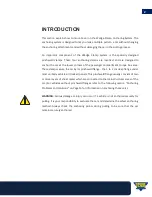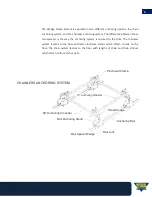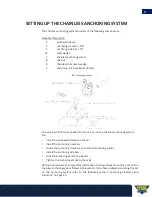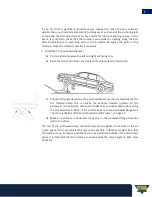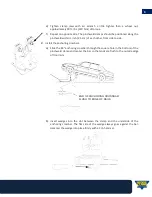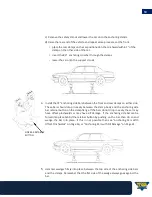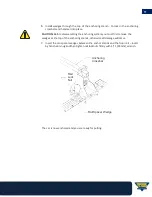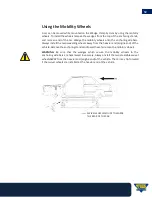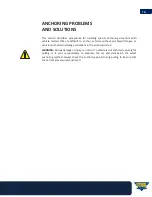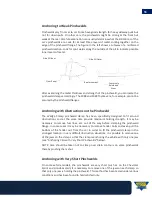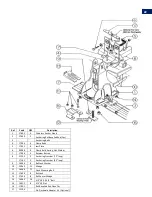
16
Anchoring to Weak Pinchwelds
Pinchwelds vary from car to car. Some have good strength for heavy sideway pulls but
not for down pulls. On other cars, the pinchwelds might be strong at the front but
weak at the rear. Careful examination can usually determine what the limitations of the
car’s pinchwelds are. Look for at least three layers of metal coming together on the
edge of the pinchweld flange. The figure to the left shows a cutaway of a reinforced
pinchweld section. Look for spot welds along the outside of the sill to indicate possible
inner layers of metal.
Side Sill Inner
Side Sill Outer
Floor Panel
Reinforcement
Commonly
Reinforced
Areas
After examining the metal thickness and strength of the pinchweld, you can locate the
pinchweld clamps accordingly. The 1988 and 1989 Toyota vans, for example, cannot be
secured by the pinchweld flanges.
Anchoring with Obstructions on the Pinchweld
The Wedge Clamp pinchweld clamp has been specifically designed to fit around
obstructions and at the same time provide maximum holding strength. It may be
necessary to remove fuel lines, etc. out of the way before clamping the pinchweld
flange. In some cases it may be necessary to remove fender bolts and even pull the
bottom of the fender out from the car in order to fit the pinchweld clamp in the
strongest location. In very difficult obstruction situations, it is possible to remove one
of the jaws on the clamp so that the clamp is anchoring the vehicle with only one jaw
(see “Anchoring Cars with Very Short Pinchwelds” below).
NOTE: Care should be taken not to clamp over drain contours on some pinchwelds
thereby pinching them shut.
Anchoring with Very Short Pinchwelds
On some vehicle models, the pinchwelds are very short (such as on the Chevrolet
Sprint and Honda Accord). It is necessary to remove one of the jaws on each clamp so
that only one jaw is holding the pinchweld. This method has been tested under various
conditions and has been found to hold satisfactorily.

